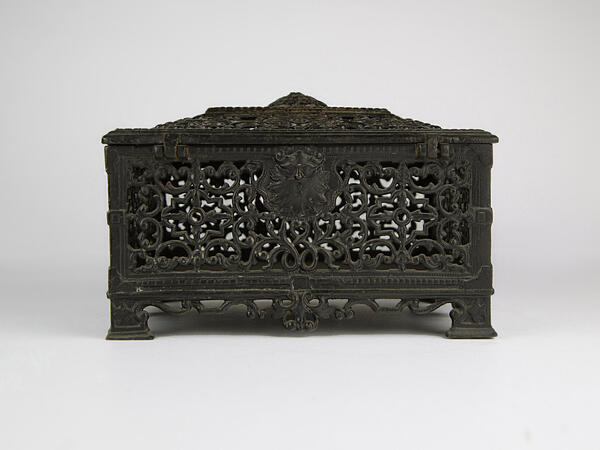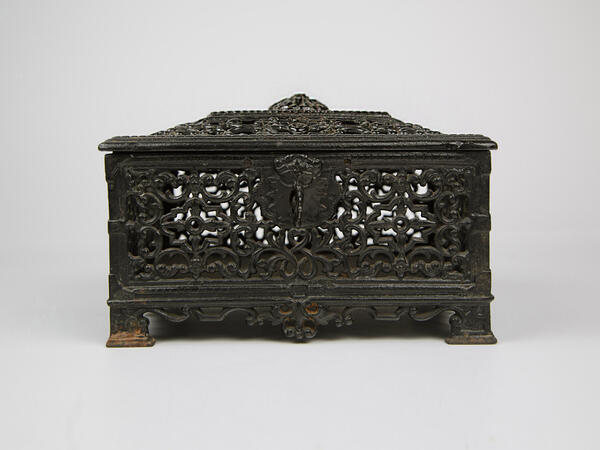The decorative jewelry box presented in the Historical and Memorial Museum of the Demidovs, cast in the 1950s using old casting patterns, is one of the products made at the famous Kasli factory.
This factory is located in the industrial town of Kasli, which, according to old geographical maps of the Russian Empire, was a factory settlement in the Perm Governorate in the Southern Urals. Nowadays, the town is notable for the famous architectural and artistic casting plant. Its history goes back to the 1740s. On August 13, 1751, the bankrupt merchant Yakov Korobkov sold his factory, which was still under construction, to Nikita Nikitich Demidov. According to the will of his childless son Nikita Nikitich Jr, the plant was inherited by his nephew Pyotr Grigoryevich Demidov in 1804. In the second half of the 19th century, having once again changed its owner, the factory became a monopolist in the industrial production of a wide variety of artistic castings.
In many ways, it is thanks to Kasli cast-iron sculptures that cast-iron art is forever associated with the scientific concept of “Russian metal art”, which is an important part of Russian decorative and applied art of the 19th–21st centuries. In the 1840s–1860s, the main traditions of artistic casting were formed at the Kasli plant. At the same time, a catalog of products began to take shape, with regular production of openwork and relief castings of decorative and household items and, most importantly, small interior sculptures.
In the 1850s, the plant began adopting the European technology of art casting by means of sand casting which made the serial production of detailed high-quality castings of large or small complex shapes possible. The significantly lower cost of cast iron objects made them a viable alternative to expensive gilded and patinated bronze ones, and attracted a wider audience of buyers. The Kasli plant made replicas of a wide array of different but always relevant fashionable and artistically expressive works of decorative and applied art from Western Europe and Russia. The factory also received a small number of original models by local sculptors, some of whom worked specifically on expanding the factory’s line of products.



